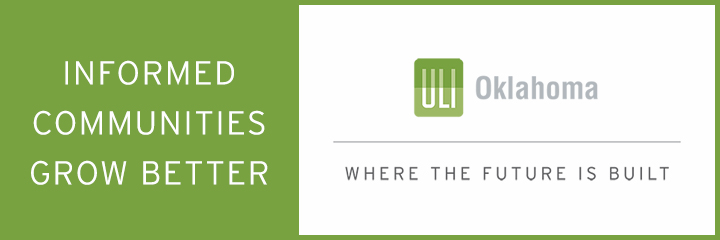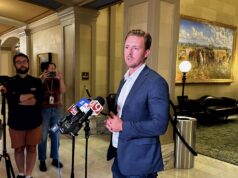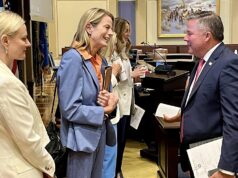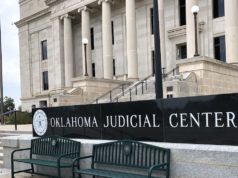

(Update: On Friday, May 21, the Oklahoma Department of Human Services announced that it had received federal approval to extend the additional Supplemental Nutrition Assistance Program benefit described below through Dec. 31. The remainder of this article remains unchanged from its May 4 publication.)
With Oklahoma Gov. Kevin Stitt lifting his COVID-19 state of emergency declaration today after more than 13 months, questions about the major impacts of his decision abound.
Most directly, Stitt rescinded the six mandates in his April 8 executive order, which included:
- The activation of the State Emergency Operations Plan, which allowed all resources of state departments and agencies to be more easily available and adjustable for addressing the COVID-19 emergency;
- The allowance of any medical professional who holds a license, certificate or other permit from the Board of Medical Licensure and Supervision, the State Board of Osteopathic Examiners and the Board of Nursing to continue practice without renewal;
- Requirements that any hospital or physician clinic cooperate with all State Department of Health requests for “critical data,” including the daily submission of available hospital beds, personal protective equipment stock, the number of ventilators and the number of COVID-positive patients in hospital receiving treatment;
- Requirements that any public or private entity testing for COVID-19 submit to the OSDH a daily report on all test results;
- A requirement that the OSDH promptly share this information with the federal Centers for Disease Control.
In a press release sent Monday, May 3, the Stitt administration said the Oklahoma State Department of Health will continue to collect data from hospitals and testing labs even without the mandate that they comply.
During a news conference Tuesday, new State Epidemiologist Jolianne Stone said entities performing testing are still required under infectious disease rules to report positive COVID-19 tests to the OSDH, but reporting overall testing figures and the number of negative test results will not be required at this point.
“We are working on strategies so that we still get that data,” Stone said.
Commissioner of Health Dr. Lance Frye conquered.
“It might require some emergency rules being put through that require these facilities to report to us. But it certainly was easier — we didn’t have to do all those things with the emergency declaration,” Frye said.
Two other provisions of Stitt’s April 8 order already had expired on April 30: one that allowed state agencies to employ additional staff without regard to classification requirements, and one that authorized OSDH to purchase necessary acquisitions without regard to the P-Card policy limit of $5,000.
“Because Oklahomans used personal responsibility to protect themselves, their families and our most vulnerable, the data shows COVID-19 is no longer an emergency,” Stitt said in a video press release. “We were the first state to reopen our economy on June 1, and we are continuing to lead the nation now. More people are getting the vaccine every day, our kids are safely back in school, our businesses are open and thriving and our unemployment rate is better than the national average.”
Clock starts for end of digital-only public meetings
Stitt’s withdrawal of his COVID-19 state of emergency declaration also triggers a new portion of the Oklahoma Open Meeting Act, which was first hurriedly amended by the Legislature in March 2020 — when Stitt first declared the emergency — to allow public bodies to hold digital public meetings.
While that law expired in November, lawmakers passed SB 1031 in February to extend the authorization of digital-only meetings through Feb. 15, 2022, or until 30 days after the expiration of the termination of the governor’s COVID-19 state of emergency.
That means all public bodies meeting in Oklahoma will have to do so in person starting Thursday, June 3.
This session, Senate President Pro Tempore Greg Treat (R-OKC) also filed (and the Senate advanced) SB 1032 to allow digital-only meetings of any public body in a county in which the governor has an active, declared a state of emergency.
The bill, which did not receive a hearing in the House this session, would have also specified that “to the extent practicable, if a public body maintains a website and utilizes a high-speed internet connection, all meetings of the public body shall be streamed live on such website and posted on the website after the meeting.”
Treat also stated during this session that he would support a requirement for Oklahoma public bodies to post their meeting notices and meeting agendas on their websites, but that language has not yet appeared in a bill.
Reduced food benefits for families, elderly?
Stitt’s decision to end his COVID-19 state of emergency declaration could also reduce Supplemental Nutrition Assistance Program (SNAP) benefit amounts for some Oklahomans who had received additional food support over the past year.
Passed in March 2020, the Families First Coronavirus Response Act authorized the U.S. Department of Agriculture to approve states to issue emergency SNAP allotments on a monthly basis, as long as both a federal public health emergency declaration and a state emergency or disaster declaration related to COVID–19 exists. While the SNAP program typically features tiered benefit amounts based on income, individuals and families have been receiving the maximum amounts possible owing to the emergency allotments.
Jessica Dietrich, policy and government relations manager for Hunger Free Oklahoma, now worries that those additional benefits will end by July 1 for Oklahomans.
“People have been getting this extra assistance during the pandemic, but a lot of folks don’t necessarily know that it’s tied to some sort of state or federal emergency declaration,” Dietrich said. “So it has created a cliff that hadn’t existed before. When this goes away, people are going to be shocked, and there hasn’t really been much warning.”
In Michigan, Utah and Wisconsin, governor-declared states of emergency have expired, but those states are continuing to issue emergency allotments because their state health departments have issued their own emergency declarations that qualify for the federal program.
“From my understanding, those three states have something already in statute that gave those departments the authority,” Dietrich said. “So that’s the question that is lingering for me: Do we have that authority built in to afford the (Oklahoma) Department of Human Services the ability to give people these allotments?”
She said SNAP benefits support Oklahoma’s economic activity and that families with children and seniors are among the groups most likely to be affected by a return to lower food benefit allotments.
“It’s also especially a challenge for elderly Oklahomans. Due to Social Security, a lot of them are at the top end of the income limit for SNAP,” she said. “That floor will drop out from under them too.”
In a press release distributed Tuesday after the publication of this story, the Oklahoma Department of Human Services noted a separate 15 percent increase in SNAP benefits through the American Rescue Plan — which equates to about $26 per month per person — will continue through September.
“We are thankful for the support of our federal partners, as well as the efforts of our governor, Legislature and state and community partners to support Oklahomans through the COVID-19 crisis,” said Secretary of Human Services and OKDHS director Justin Brown. “As our lives begin to return to normal and the economy rebuilds, OKDHS is committed to continuing our work to build hope and provide help for those who need us most.”
(Update: This article was updated at 1 p.m. Tuesday, May 4, to include information from DHS and a quote from Brown. It was updated again at 1:50 p.m. to include information from Stone and Frye regarding the reporting of tests.)




















